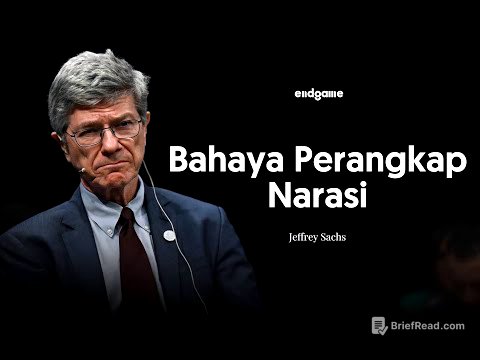TLDR;
This YouTube video is a comprehensive lecture on people's geography, focusing on rocks, continents, and oceans. The lecture covers the formation and types of rocks (igneous, sedimentary, and metamorphic), continental drift theory, volcanoes, ocean relief features, and coral reefs. It also includes discussions on exam strategies, answer key updates, and general knowledge questions.
- Types of rocks and their formation
- Continental Drift Theory and supporting evidence
- Volcanoes and their types
- Ocean relief features and their characteristics
- Coral reefs and their importance
Introduction [0:38]
The lecture begins with a greeting and confirmation that the audio is working correctly. The instructor announces that this is the fourth lecture of people's geography, which will cover rocks, continents, and oceans. The instructor emphasizes the importance of the topic, noting that questions from this area frequently appear in recent exams.
Answer Key Discussion [1:08]
The instructor discusses the recently released CGL answer key and congratulates those who received good scores. They advise those in the general category with scores of 140+ to prepare for mains and note that 146 is generally considered a safe score for OBC candidates. The instructor addresses queries about the answer key not showing questions and answers, suggesting users try accessing it from a laptop.
Kuiper Belt Explanation [2:40]
The instructor briefly explains the Kuiper Belt, describing it as an asteroid belt beyond Neptune containing small and large rocks called asteroids. This is differentiated from the asteroid belt located between Mars and Jupiter.
Rocks: Igneous Rocks [3:15]
The lecture transitions to the topic of rocks, starting with igneous rocks. The study of rocks is called petrology, and carbon dating is used to determine their age. Igneous rocks are formed from the solidification of magma or lava. Extrusive igneous rocks solidify on the Earth's surface, while intrusive igneous rocks solidify inside the Earth's crust. Intrusive rocks are also known as plutonic rocks.
Landforms from Magma [6:07]
The instructor describes various landforms created by magma, such as lopoliths (saucer-shaped formations) and faecoliths (wavy masses of rock associated with anticlines and synclines). Sills are horizontal rock formations, while dykes are vertical formations. Laccoliths are mini-batholiths connected by a pipe. The magma chamber is located in the asthenosphere.
Sedimentary Rocks [11:27]
The lecture covers sedimentary rocks, which are formed from the compaction of sediments. These rocks are divided into three types: mechanical, chemical, and organic. Examples include sandstone (mechanical), limestone (chemical), and coal (organic). The instructor emphasizes the importance of remembering examples of each type.
Metamorphic Rocks [13:36]
Metamorphic rocks are formed when existing rocks are transformed by changes in pressure, volume, and temperature (PVT). Dynamic metamorphism involves mechanical changes without chemical alteration, often occurring at low temperatures and high pressures. Contact metamorphism occurs due to temperature changes from magma contact, while regional metamorphism results from pressure changes, such as at convergent plate boundaries. Recrystallization is a key process in thermal metamorphism. Examples include gneiss (from granite) and marble (from limestone). Quartz is identified as a mineral, not a rock, commonly found in igneous rocks.
Addressing Buffering Issues and Review [20:30]
The instructor addresses buffering issues reported by viewers and repeats the explanation of laccoliths, sedimentary rocks, and metamorphic rocks. This review covers the formation processes and key examples of each rock type.
Rock Cycle [29:28]
The rock cycle is explained, illustrating how one type of rock can transform into another. Igneous rocks can break down into sediments, forming sedimentary rocks. Sedimentary rocks can then undergo PVT changes to become metamorphic rocks. Metamorphic rocks can melt and solidify to form igneous rocks, completing the cycle. The Taj Mahal is identified as marble (metamorphic), and the Red Fort is made of red sandstone (sedimentary).
Volcanoes [34:31]
The lecture discusses volcanoes, noting that they emit magma, gas, and pyroclastic debris. Types of volcanoes include cinder volcanoes, shield volcanoes (made of non-viscous basaltic lava), composite volcanoes (made of thicker lava), and caldera volcanoes (the most explosive). Flood basalt provinces, such as the Deccan Traps in India, are formed by highly fluid basaltic lava. The world's highest volcano is Nevus Ojas Dil Salad Ojas, located on the Chile-Argentine border. The Pacific Ring of Fire is a zone of high volcanic and earthquake activity.
Continental Drift Theory [39:56]
The Continental Drift Theory, proposed by Alfred Wegener in 1912, suggests that continents were once joined together in a supercontinent called Pangea, surrounded by the ocean Panthala. About 220 million years ago, Pangea began to break apart, forming Laurasia and Gondwanaland. Evidence for this theory includes the jigsaw fit of continents, placer deposits, and the distribution of fossils. The instructor credits Abraham Orthal with first proposing the idea of connected continents.
Evidence and Forces Behind Continental Drift [45:50]
Wegener's evidence included the fit of continents, similar rock ages, and fossil distribution. Wegener attributed the movement of continents to polar fling force and tidal force, but these explanations were not well-received. Arthur Holmes proposed that convection currents in the mantle, driven by radioactive decay, were responsible for plate movement.
Plate Tectonics and Sea Floor Spreading [49:52]
The lecture introduces plate tectonics, with Mackenzie and Parker credited for the theory. Convection currents in the mantle drive the movement of lithospheric plates. The rate of plate movement varies, with the Arctic Ridge moving about 1 cm per year and the Pacific Plate moving about 15 cm per year. Harry Hess developed the sea floor spreading theory in 1961, explaining that new crust is formed at divergent plate boundaries, creating mid-oceanic ridges.
Ocean Relief Features [54:17]
The lecture describes major ocean relief features: continental shelf, continental slope, continental rise, and abyssal plains. The continental shelf is a submerged extension of the continent, rich in natural resources. Minor relief features include sea mounts, guyots (flat-topped sea mounts), mid-ocean ridges, trenches (such as the Mariana Trench), and coral reefs.
Coral Reefs [1:00:32]
Coral reefs are formed by colonies of corals in symbiotic relationships with algae. Corals provide shelter, while algae provide food through photosynthesis. Coral reefs require sunlight, clear water, and saline conditions. They are made of calcium carbonate and form extensive structures like the Great Barrier Reef in Australia. Atolls are ring-shaped coral reefs formed around submerged sea mounts. Coral bleaching, caused by rising ocean temperatures and ocean acidification, is a significant threat to coral ecosystems.
Questions and Answers [1:06:37]
The instructor answers questions from viewers, covering topics such as the location of the Bermuda Triangle, the composition of different rock types, and the order of oceans by size. The instructor also discusses the benefits of the paid batch, including private videos, recorded lectures, quizzes, and a private Telegram group.
Additional Questions and Course Information [1:25:32]
The session continues with more questions, including the identification of major ocean relief features, the location of the Mariana Trench, and the percentage of fresh water on Earth. The instructor provides hints and explanations for each question. The lecture concludes with information about the course, including the availability of notes, PYQ series, and the last day to enroll at the current price.









